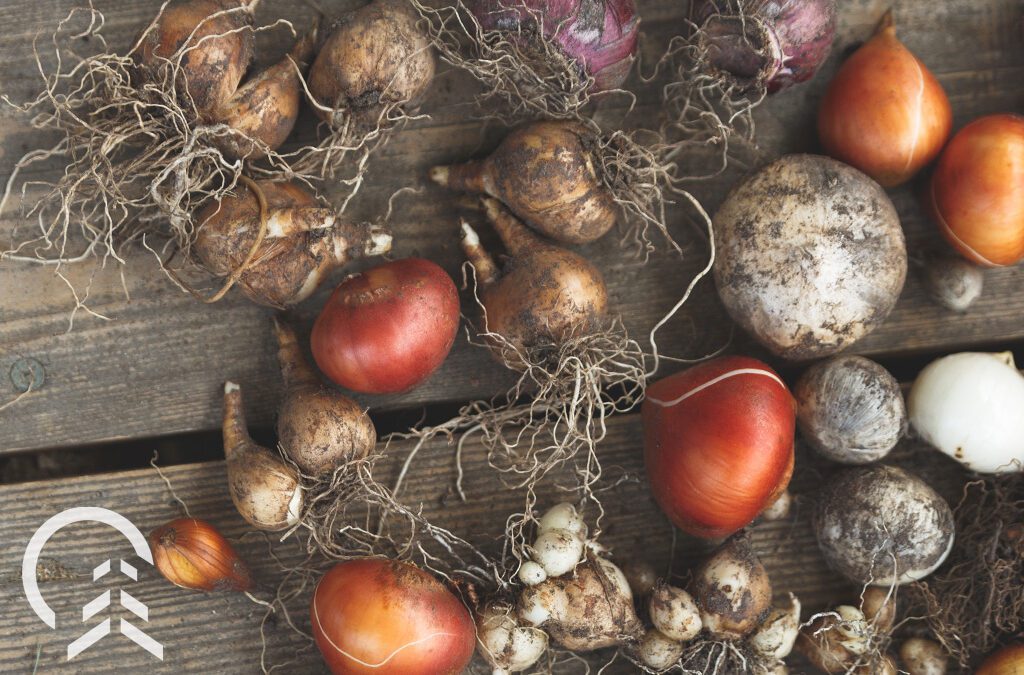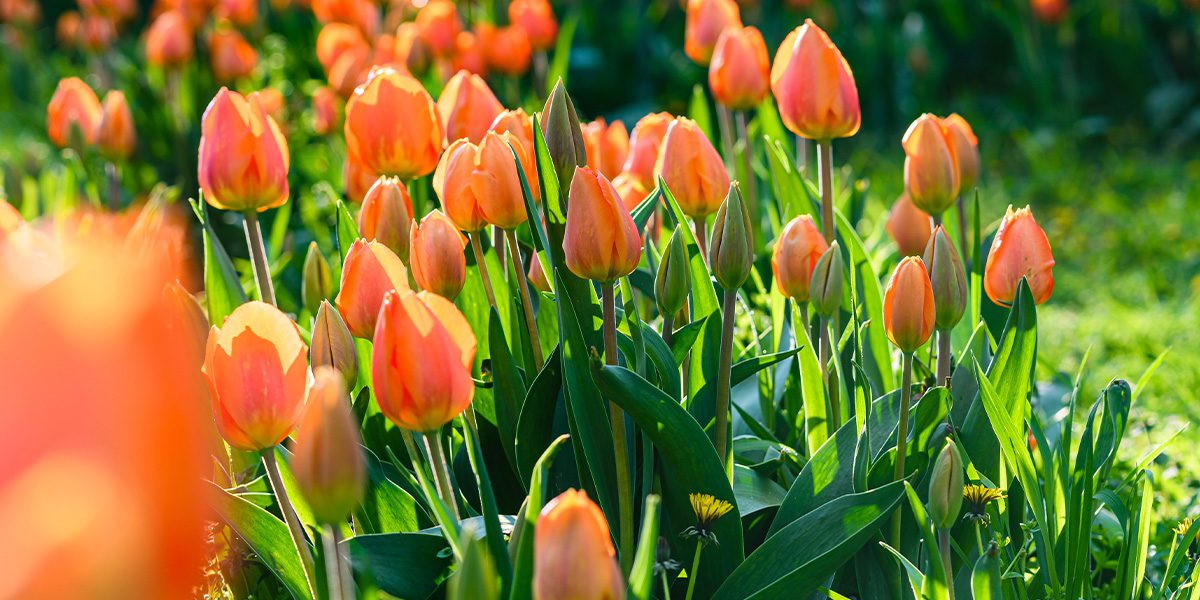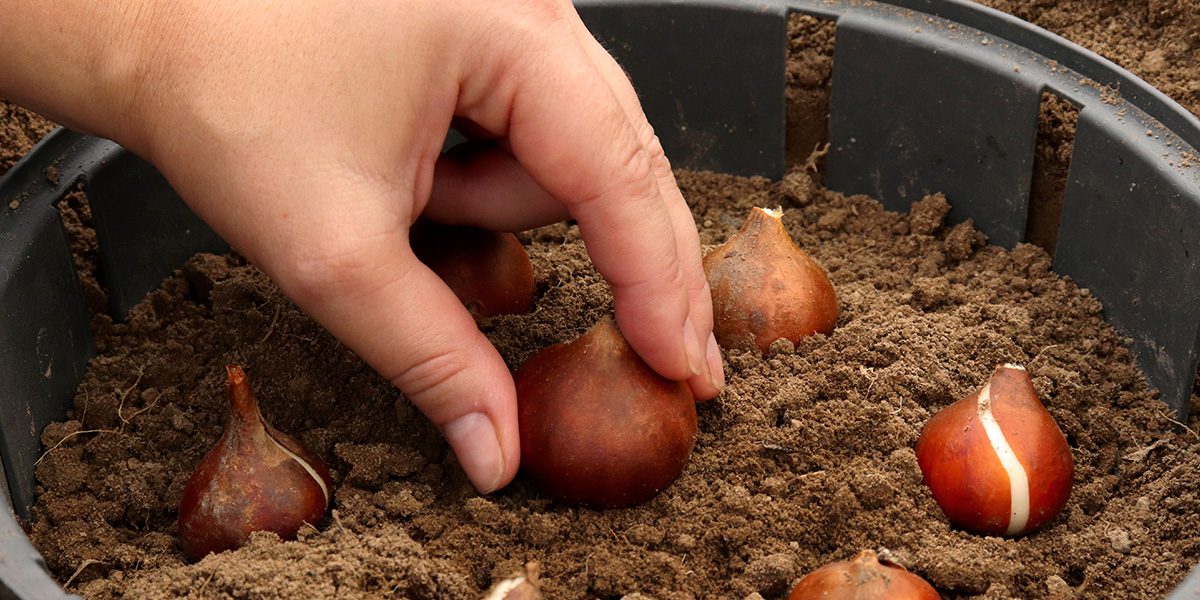Surprise yourself with flowers next spring by burying these treasures now.
The first flowers of spring, flowering bulbs always come as a welcome sight after the long months of winter. Tulips, daffodils, and hyacinths are a few of the many bulbs that bloom each April and May. The key to enjoying these treasures is to plant them in the fall. Here’s everything you need to know to plant them, create beautiful arrangements, and outsmart curious squirrels!
What is the Best Month to Plant Spring Bulbs in Chicago?
Late-September to early-November is the season for planting spring bulbs in Chicago. The important thing is to plant them before the ground freezes. You don’t want to plant them too early, or they could be tempted to send up foliage if the weather is hot enough. So, as a general rule, wait until air temperatures are below 50F and the soil is 55F or cooler.
How Do You Plant Spring Flower Bulbs?
Planting spring bulbs is an easy task with lots of room for creativity. Follow the steps below for success in planting these spring beauties:
1. Select a Good Location
Most bulbs need a bright spot where they can drink the sun’s rays. Keep in mind that trees, shrubs, and perennials won’t be leafed out yet, so you have extra sunlight to work with. Bulbs also need well-draining soil to prevent rotting. So choose nice, loamy soil that has good drainage year-round.
2. Plan a Beautiful Layout
One of the best parts about planting bulbs is that you can create beautiful arrangements without much trouble. Check out our design tips below to get your creativity flowing!
3. Dig the Right Depth
“How deep should I plant my bulbs?” is a common question among gardeners. A general rule is to plant them three times as deep as the height of the bulb. So, if a crocus bulb stands one inch in stature, dig the hole three inches deep. If in doubt, the plant tag will tell you the correct depth and spacing.
4. Plant and Backfill
With your holes dug and ready, kindly place the bulbs in their new home with the pointy side up. Backfill the soil on top. Then, as a finishing touch, water them to reduce air pockets and stimulate the roots. You only need to water them once and then let nature take over.
5. Mark Their Location
Make yourself a reminder of where you planted them so you don’t accidentally dig them up later in the fall or next spring. Jot down their location in your handy garden journal, or put a stake in the ground as a signpost.
Design Tips for Arranging Spring Flower Bulbs
As we mentioned above, spring flower bulbs are like a box of paints that allow you to create beautiful arrangements. In general, you have more impact when you plant them in groups of 3, 5, or 7—rather than standing alone. Odd-numbered groupings have a more natural look than even ones.
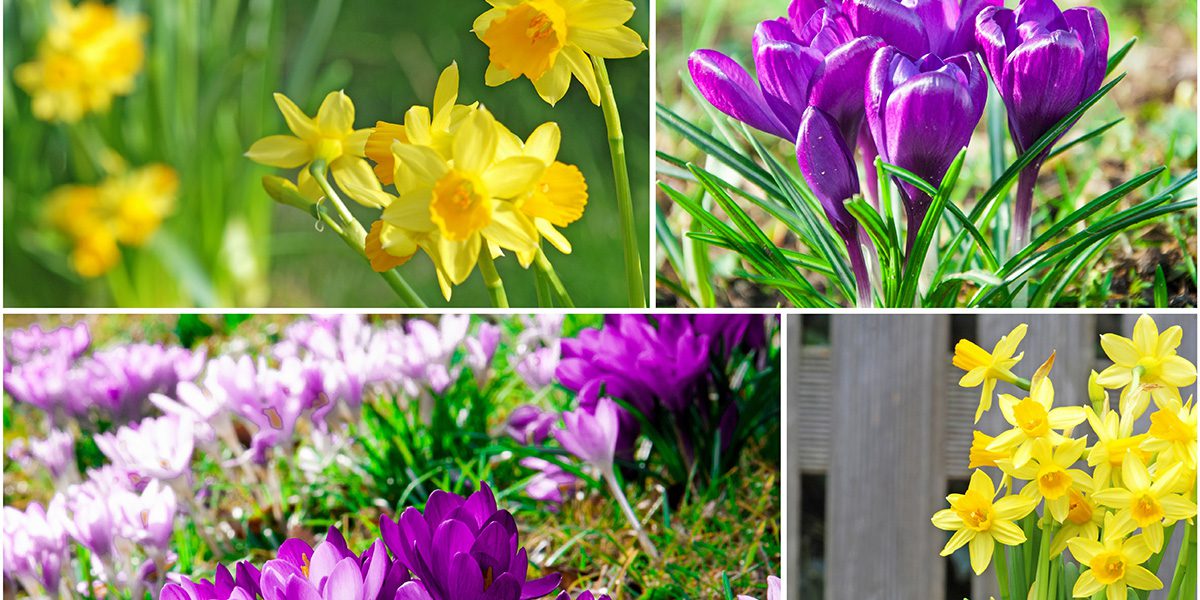
Some gardeners take advantage of different blooming times by layering bulbs on top of each other. For example, you can layer early-blooming crocus on top of mid-spring blooming daffodils. As the crocuses fade, the daffodils come to the stage with an encore flowering. This technique allows you to enjoy a continual show of flowers in the same location.
You can also combine colors, mix them among other kinds of perennials, place them along flower borders, or plant them in planters. Think of bulbs as versatile flowers that will rise up anywhere you want a flash of color.
How to Keep Squirrels Away from Bulbs in Chicago
Squirrels are sometimes known to feast on newly-planted bulbs. It’s hard to blame them! These carbohydrate-rich roots are like a ready-meal for a squirrel. Fortunately, there are ways to dissuade our local tree guardians from snacking on our freshly-planted bulbs:
- Plant Away from Their Paths: Ever notice squirrels running back and forth along your fences? They tend to use the same pathways every day as they forage for food. It’s a good idea to plant bulbs away from their favorite runways and digging spots.
- Plant Later in the Fall: Squirrels are proactive creatures. They’re busy caching food for the winter long before the ground freezes. When you wait to plant bulbs later in the fall, squirrels will already have most of their rations hidden and are less likely to dig up your bulbs.
- Cover with Chicken Wire: If necessary, a mesh of finely-woven chicken wire will prevent squirrels from digging up the bulbs. Stake the covering in place, or spread mulch over the top to secure and hide it.
How to Add Bulbs to a Lawn
Ever dream of having a flower meadow in your yard? Planting bulbs among your grass is a great way to bring flowers, color, and biodiversity to your landscape. They’ll flower in the spring as your grass is waking up. You can mow around them or let the grass grow a little longer as you enjoy the flowers.
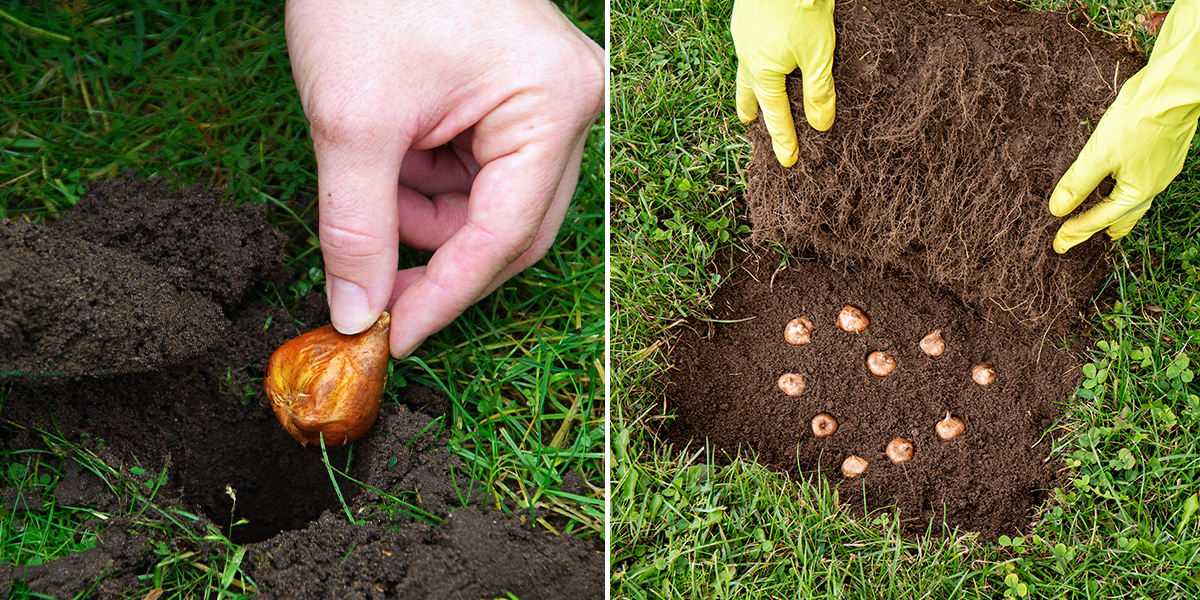
To plant bulbs in your lawn, simply dig a narrow hole, carefully removing the top layer of sod. Plant the bulbs in the earth, backfill, and cover the hole with the sod again. The bulbs will find a way to the surface through the lawn next spring.
In closing, bulbs are some of the most versatile flowers you can add to your garden. In borders, porch planters, lawns, or even beds of their own, they bring early blazes of beauty wherever they are. By planting bulbs with different timings, you can enjoy their offering all through the spring and into the summer.
For more tips on planting spring bulbs, feel free to visit our garden centers in Bloomingdale and Carpentersville!
Platt Hill Nursery is Chicago’s premier garden center and nursery.

